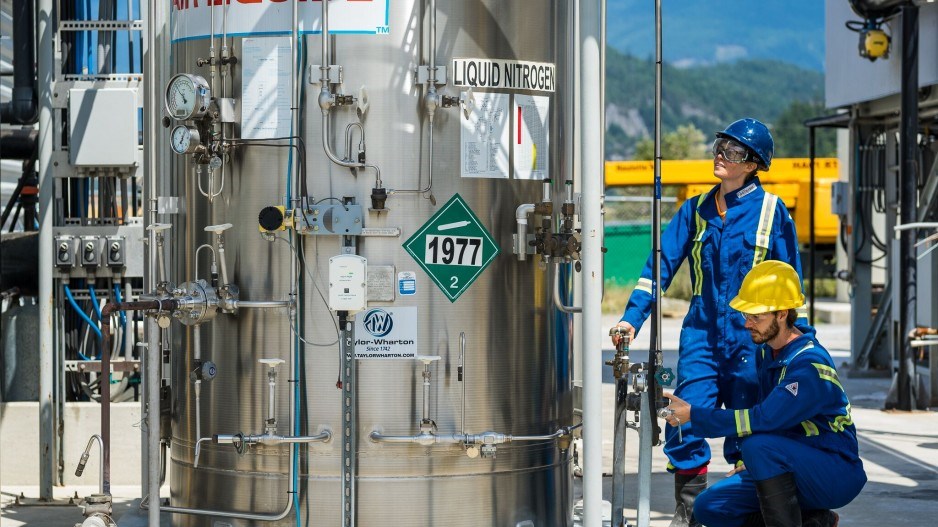Made-in-B.C. tech capable of pulling carbon dioxide from the atmosphere is moving closer to commercialization with a first-of-its-kind facility starting significant work across the pond.
Carbon Engineering Ltd. revealed late Wednesday it’s commenced engineering and design work with U.K.-based Storegga Geotechnologies Ltd. on what would be the first large-scale direct air capture (DAC) plant in Europe.
The proposed project would tap the Canadian cleantech firm’s technology to remove between 500,000 tonnes and 1 million tonnes of carbon from the atmosphere annually.
“We have great confidence that the technology is ready for [commercial] deployment right now,” Carbon Engineering CEO Steve Oldham told BIV.
But he added that the financing community would like to see Carbon Engineering’s first U.S. plant up and running in order to demonstrate its commercial viability.
The one-megaton facility is set to be built by 2024 in the Permian Basin, which encompasses parts of Texas and New Mexico.
The work currently being done for the British project is focused on ironing out the costs and economic modelling around the facility, while a shortlist of potential sites has already been identified in Scotland.
Carbon Engineering’s technology takes CO2 directly out of the atmosphere, where it can either be sequestered or used for low-carbon fuel.
That’s one of the reasons Scotland is being eyeballed for the project, as it has access to offshore storage sites where the carbon can be stored beneath the seabed.
The country is also home to an oil and gas workforce in the North Sea that can operate such a DAC plant.
“If you capture CO2 from the atmosphere, you have to do something with it and putting it back in the ground is obviously very good for the environment,” Oldham said.
“You're right next to the North Sea pipelines that already connect the northeast coast of Scotland to the North Sea. So we can use those pipelines to put CO2 back in the ground.”
If all goes to plan, he believes the Scottish site can begin construction by late 2023 and he’s hopeful the Canadian government will come on board with plans for launching a domestic facility as it attempts to reach its own environmental goals.
Almost exactly one year ago the company broke ground on a new innovation centre near its headquarters in Squamish, B.C.
The centre, which is expected to open later this summer, includes an advanced development facility and an integrated direct air capture and air-to-fuel plant.
There, it will be able to capture 4.5 tonnes of CO2 from the atmosphere and produce at least 320 litres of low-carbon fuel a day.
Carbon Engineering is focused primarily on three market segments: jurisdictions that wish to capture carbon to battle climate change; enhanced oil recovery to deliver carbon-neutral or carbon-negative crude; and the creation of synthetic liquid fuel products by combining hydrogen with Carbon Engineering’s captured carbon.
Investors in Carbon Engineering include Microsoft Corp. (Nasdaq: MSFT) co-founder Bill Gates, Chevron Technology Ventures as well as Murray Edwards, the executive chairman of Canadian Natural Resources Ltd. (TSX: CNQ), among others.
To date, the cleantech firm has raised more than $100 million from private investors.
While Oldham anticipates Squamish remaining the RnD centre for Carbon Engineering, he said the company is shoring up employees based in the U.S. and Europe as the company works on the two new facilities.




